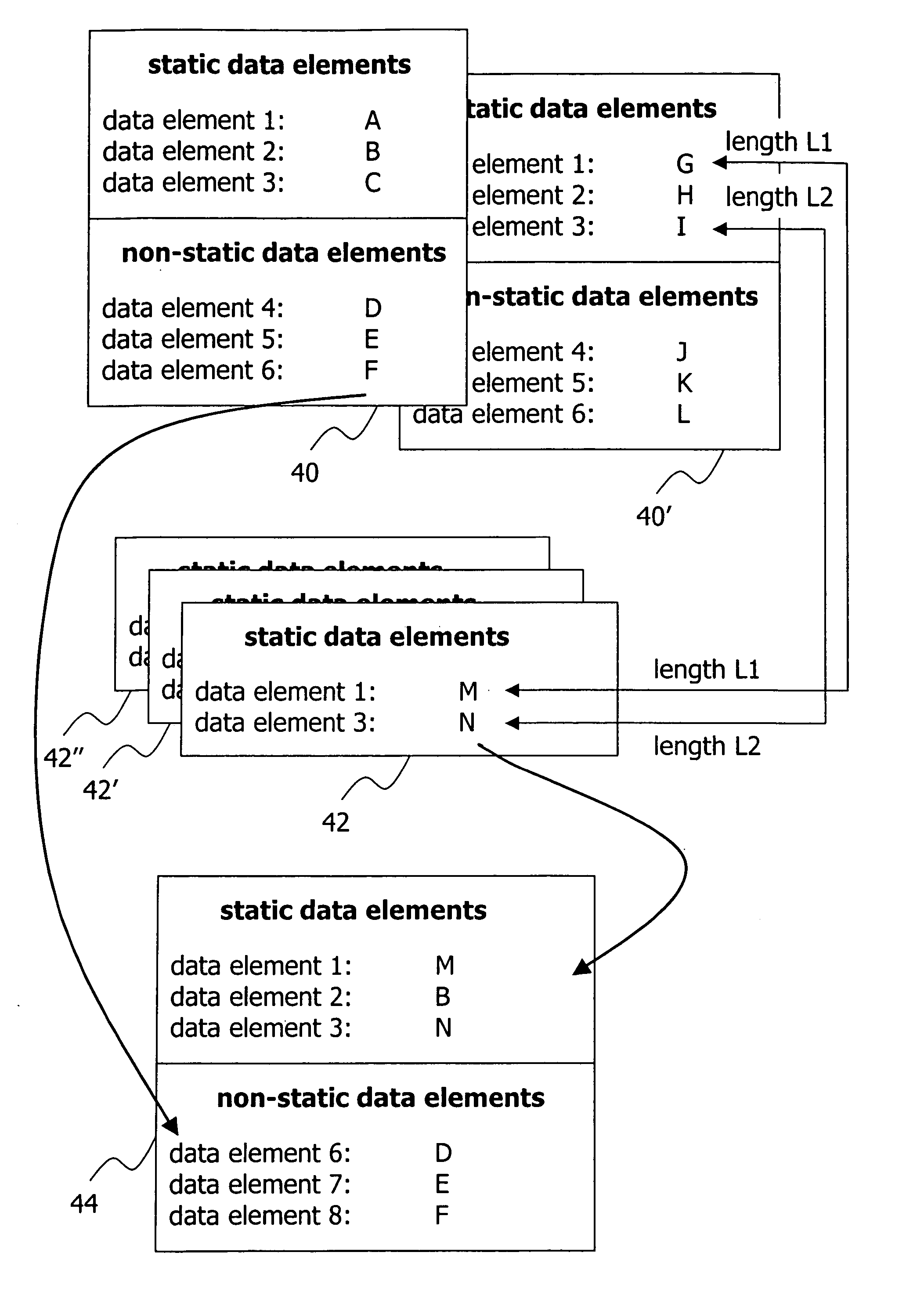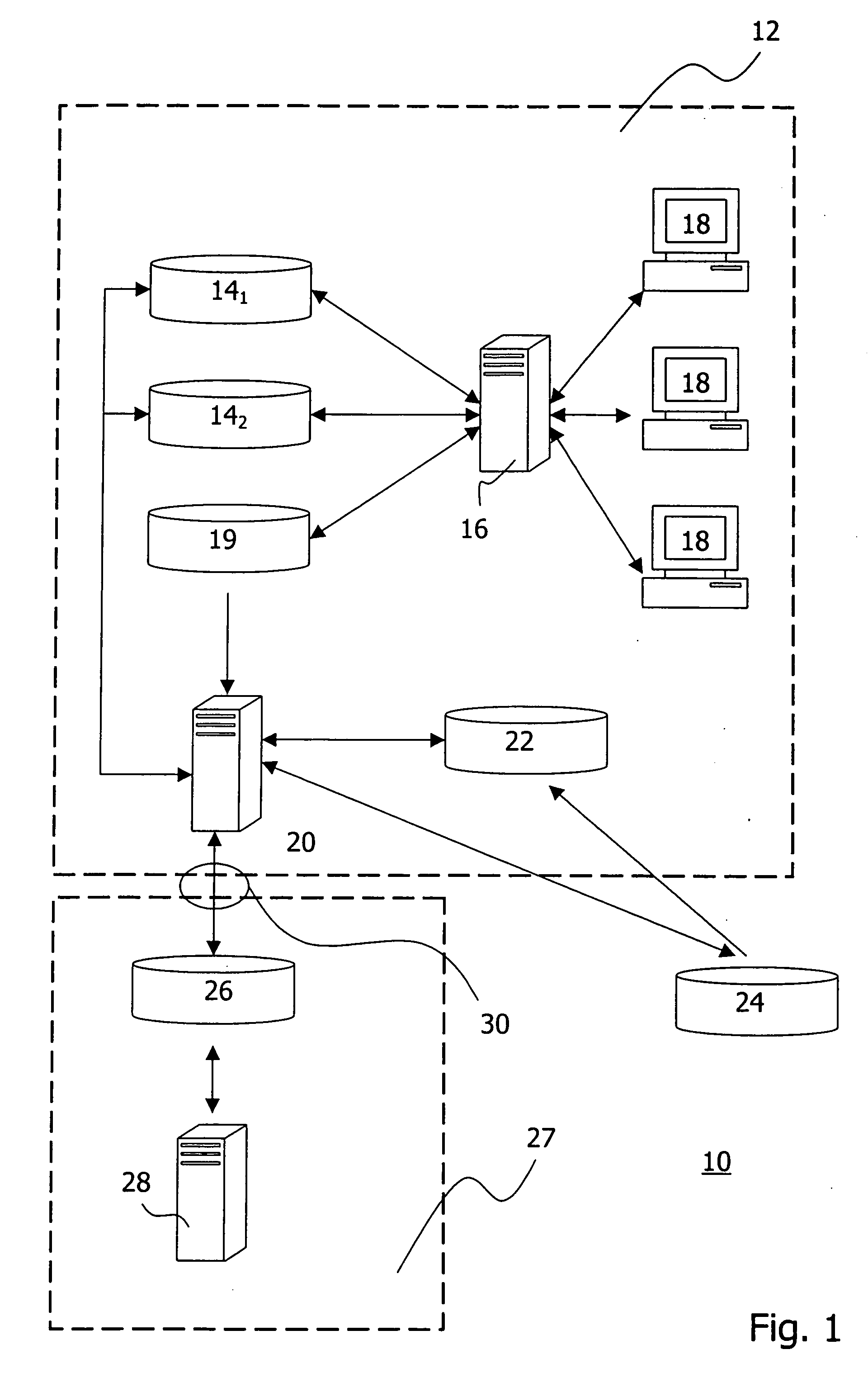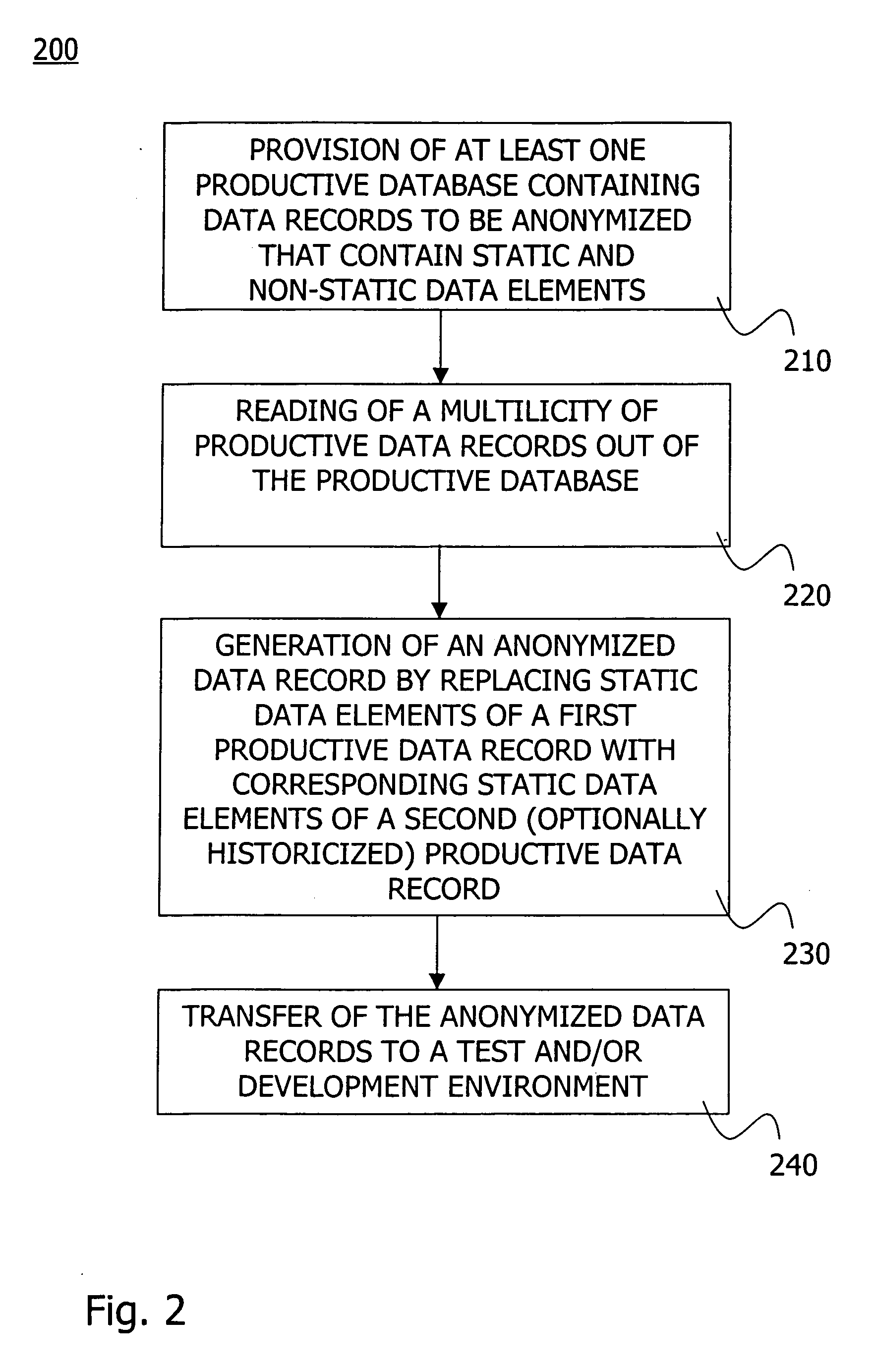Generation of anonymized data records from productive application data
a technology of productive application data and data records, applied in the field of data anonymization, can solve the problems of insufficient reliability of data spaces accessible by developers on the basis of their respective authorization in the productive environment, inability to obtain reliable data, and high cost of measurement, so as to promote the redundancy-free storage of static data elements and increase the significance of information
- Summary
- Abstract
- Description
- Claims
- Application Information
AI Technical Summary
Benefits of technology
Problems solved by technology
Method used
Image
Examples
Embodiment Construction
[0027] The invention is explained in greater detail below by reference to preferred embodiments. Although one of the embodiments explained is focused on the generation of anonymized data records containing realistic address images, it is pointed out that the invention is not restricted to this field of application. The invention may, for example, be used anywhere where applications are to be tested reliably and with an efficient error analysis mechanism.
[0028]FIG. 1 shows an exemplary embodiment of a computer system 10 according to the invention for generating anonymized data records for developing and testing application programs. In the various embodiments, corresponding elements and components are provided in each case with corresponding reference symbols.
[0029] In accordance with the embodiment shown in FIG. 1, the computer system 10 comprises a productive computer network 12 involving a plurality of productive databases 14, at least one application server 16 and also a multip...
PUM
 Login to View More
Login to View More Abstract
Description
Claims
Application Information
 Login to View More
Login to View More - R&D
- Intellectual Property
- Life Sciences
- Materials
- Tech Scout
- Unparalleled Data Quality
- Higher Quality Content
- 60% Fewer Hallucinations
Browse by: Latest US Patents, China's latest patents, Technical Efficacy Thesaurus, Application Domain, Technology Topic, Popular Technical Reports.
© 2025 PatSnap. All rights reserved.Legal|Privacy policy|Modern Slavery Act Transparency Statement|Sitemap|About US| Contact US: help@patsnap.com



